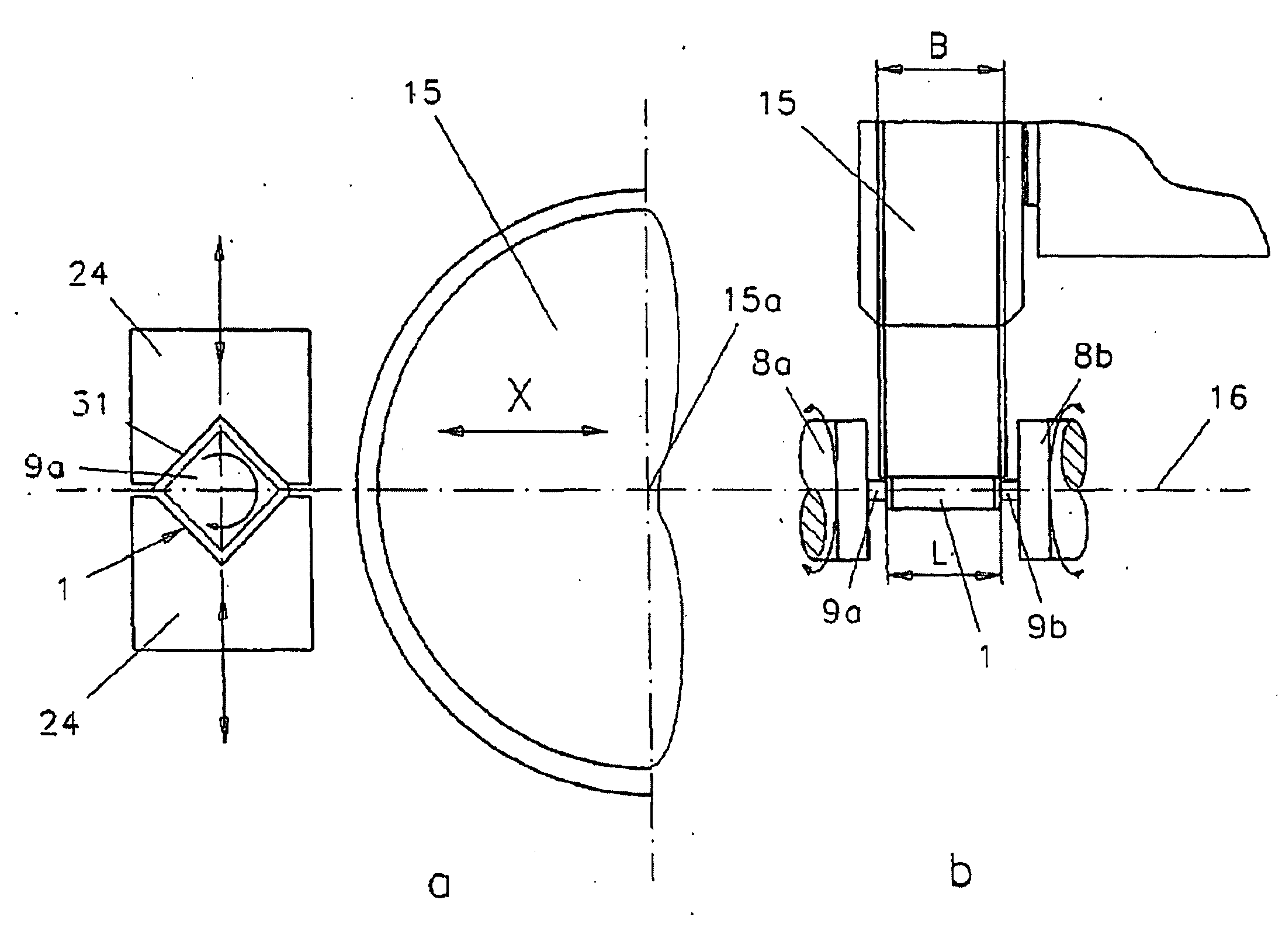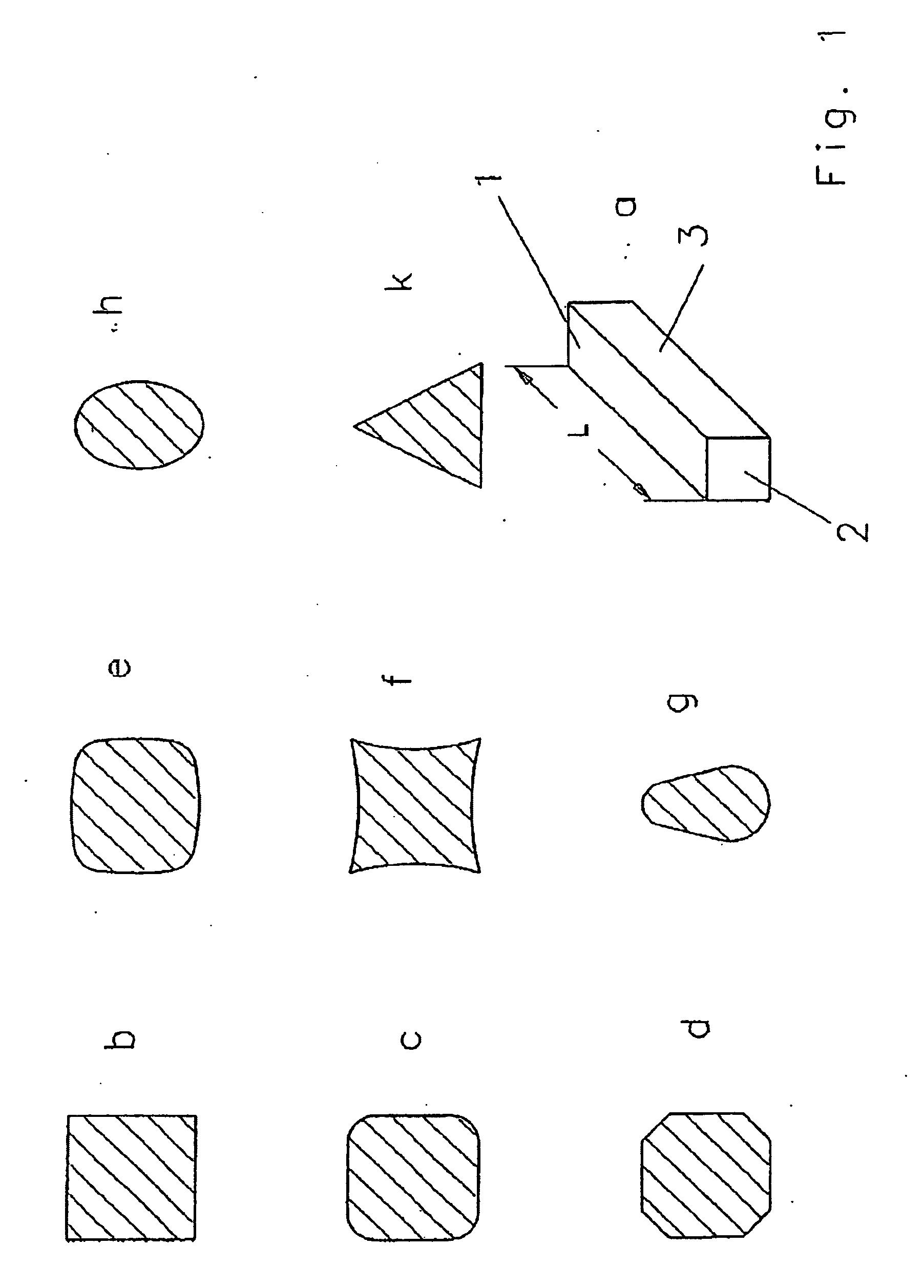Method of Grinding Bar-Shaped Workpieces, Grinding Machine for Carrying Out the Method, and Grinding Cell in Twin Arrangement
a technology of workpieces and grinding cells, which is applied in the direction of grinding machines, instruments, program control, etc., can solve the problems of difficult supply of cooling lubricant to the grinding zone, high demands on the finished bar-shaped workpiece, and limited method, etc., to achieve the effect of reducing space requirements, minimal handling times, and simple design of grinding machines
- Summary
- Abstract
- Description
- Claims
- Application Information
AI Technical Summary
Benefits of technology
Problems solved by technology
Method used
Image
Examples
Embodiment Construction
[0037]FIG. 1 illustrates, by way of example, shapes which the cross-sections of the bar-shaped workpiece 1 to be ground can have. In the simplest form, the bar-shaped workpiece 1 is a small cuboid rod having cuboid faces 2 and rectangular longitudinal sides 3, see FIG. 1a. A preferred field of application for such bar-shaped workpieces 1 is that of actuators in mechanical switching or adjusting devices. These actuators can have a length L between 20 and 80 mm and a cross-section between 4 and 15 mm. However, this is only an example. Various metals, as well as ceramics, are possible as materials for such bar-shaped workpieces 1. Depending on the desired function, the cross-section (as illustrated by examples in FIG. 1) may also deviate from the shape of a strict geometrical square (FIG. 1b). For example, the longitudinal edges can be rounded (FIG. 1c) or provided with flat chamfers (FIG. 1d). The square shape can also be varied to form a square having convex surfaces (FIG. 1e) or con...
PUM
| Property | Measurement | Unit |
|---|---|---|
| edge length | aaaaa | aaaaa |
| edge length | aaaaa | aaaaa |
| edge length | aaaaa | aaaaa |
Abstract
Description
Claims
Application Information
 Login to View More
Login to View More - R&D
- Intellectual Property
- Life Sciences
- Materials
- Tech Scout
- Unparalleled Data Quality
- Higher Quality Content
- 60% Fewer Hallucinations
Browse by: Latest US Patents, China's latest patents, Technical Efficacy Thesaurus, Application Domain, Technology Topic, Popular Technical Reports.
© 2025 PatSnap. All rights reserved.Legal|Privacy policy|Modern Slavery Act Transparency Statement|Sitemap|About US| Contact US: help@patsnap.com



